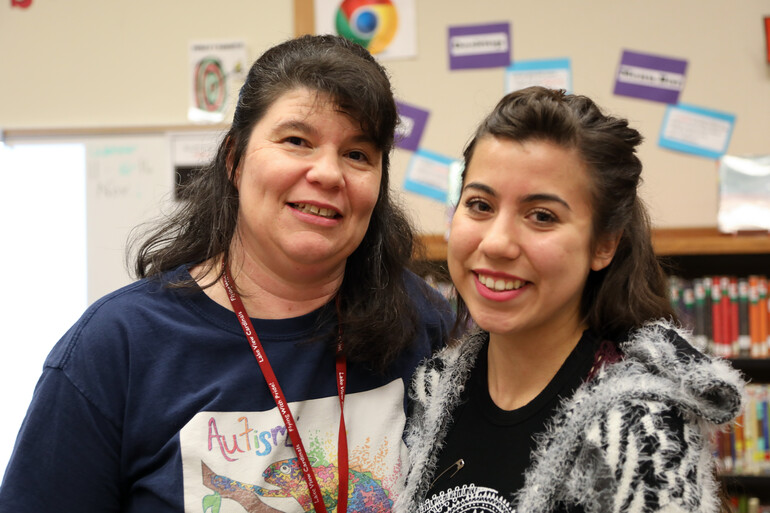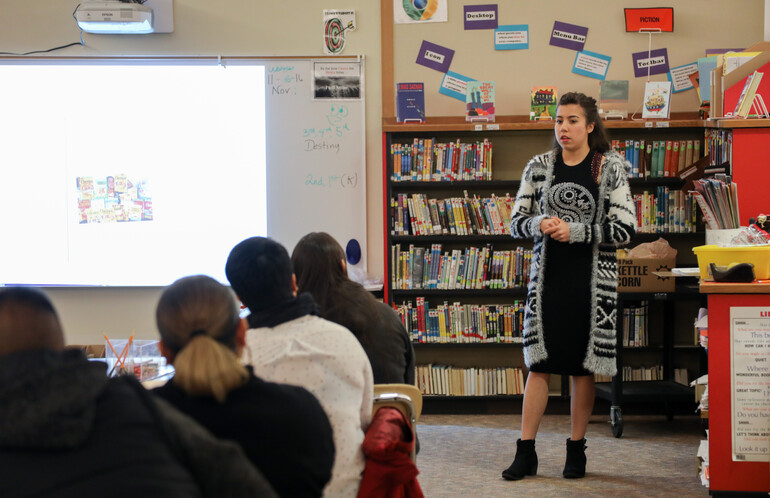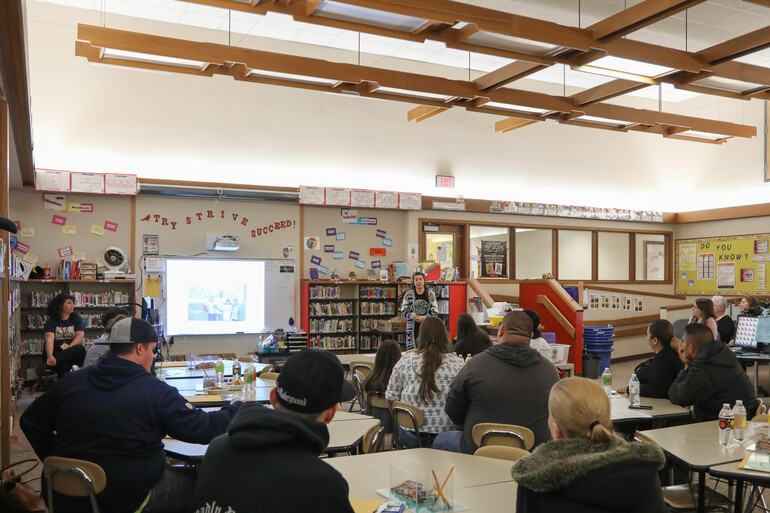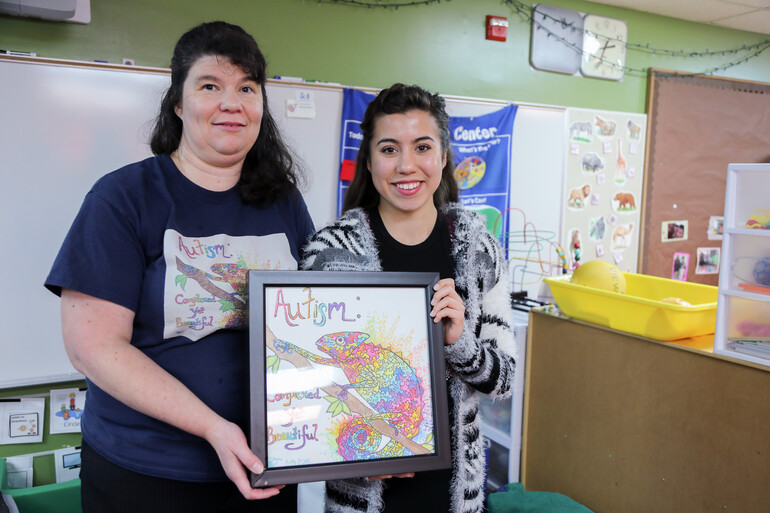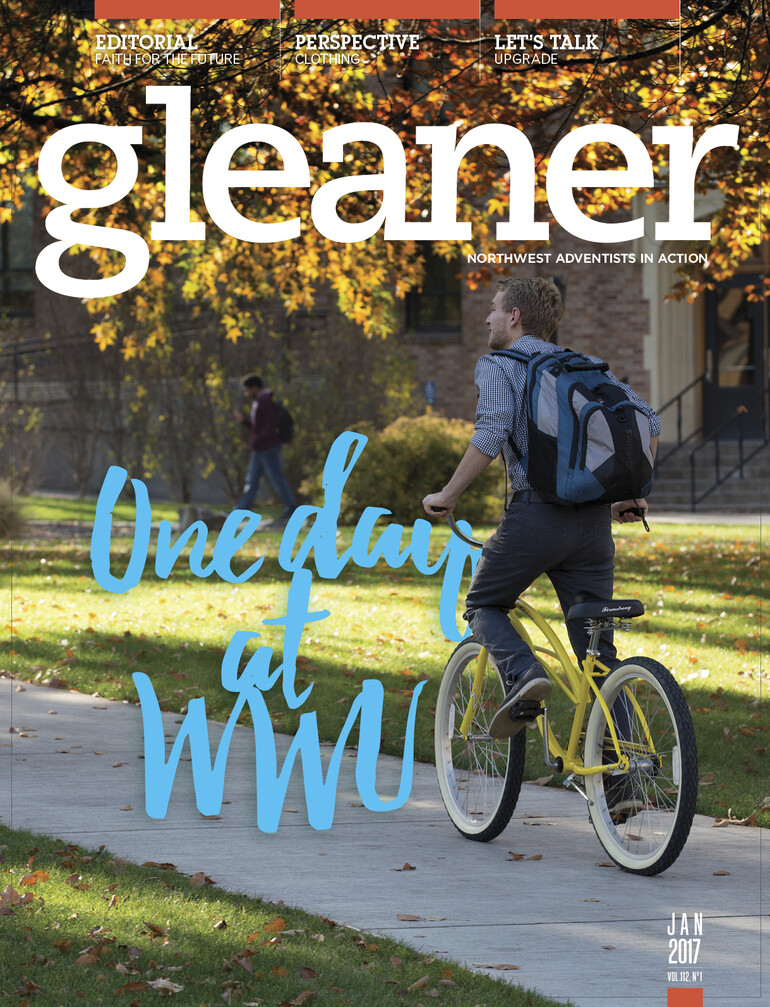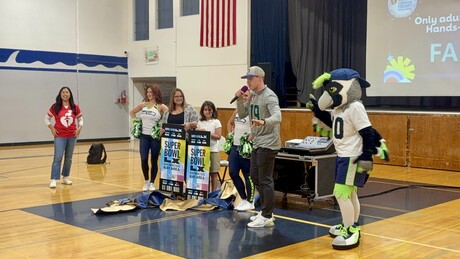Nadia Diaz, 18, walked out of the library and down the hallway to her classroom with purpose. But it wasn’t just any classroom.
This was a local Auburn, Wash., elementary school classroom where she volunteers each day she has off from school. Diaz comes at the teacher’s invitation to specifically interact with young students who are on the autism spectrum.
“She’s really good,” says Lori Sheehan, Lake View Elementary School teacher. “Nadia knows the language to use to communicate with my students.”
Diaz knows each students’ likes, interests, dislikes, triggers and sensory attractions. She knows their language. She grew up interpreting the language and behavior of autism.
Diaz learned firsthand about autism in her household with her brother, Brandon, who is 15 months younger. She is a senior at Auburn Adventist Academy; Brandon is a junior at a local high school and was once a student of Sheehan’s.
Previously, Sheehan asked Diaz to draw and illustrate an animal that most reminded her of her brother. Diaz chose a chameleon and drew multicolored autism awareness puzzle pieces into the body. This artwork is now the classroom logo and hangs on the classroom wall. It is also silk-screen printed onto team T-shirts for the classroom.
But this particular day, Diaz didn’t come to volunteer with children. She came to talk with parents whose children are in kindergarten through second grade. This was her first time to speak and share her experience with Lake View parents in a joint parent-teacher resource meeting in the school’s library.
Diaz eloquently shared — with no notes, stutters or nervous stops — what it’s like to grow up with a sibling who has autism.
“Children with autism are special and part of a puzzle that is unique,” Diaz says. “These children are so amazing, and showing how spectacular they are will show everyone else that autism is not a bad thing but a beautiful thing.”
Her words connected. Following her 10-minute speech, the parents shared with emotion their own experiences, laughed and cried together, celebrated wins, tracked developmental progress, and indicated how they drew courage and reassurance from what Diaz shared. These parents will likely be on the same or similar learning journey at home and at school until their children are age 21.
Diaz sat on the sidelines with her mother, Lori Diaz, and her grandmother, Tricia Caldwell, for the remainder of the parent meeting. All three ladies actively listened so they could better interact with parents in one-on-one conversations.
Why? Because the Diaz family knows the importance of a team supporting a family as they raise a child with autism.





